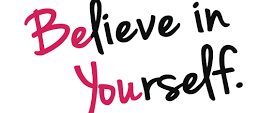Terms of Reference: Development of a Pictorial Counselling Tool (Pictorial Bank) for SRHR Service Providers to Enable Production of Information and Education Material that is Accessible for all Including Persons with Intellectual Disabilities
1. Introduction
1.1 About Humanity & Inclusion
Humanity and Inclusion – HI (formerly Handicap International) is an international nongovernmental Organization founded in 1982 and currently located in more than 60 countries worldwide. HI is an independent and impartial aid organization working in situations of poverty and exclusion, conflict and disaster. The organization works alongside people with disabilities and vulnerable populations, taking action and bearing witness in order to respond to their essential needs, improve their living conditions and promote respect for their dignity and fundamental rights.
1.2 About the WISH Project
The Women’s Integrated Sexual Health (WISH2ACTION or WISH) Consortium brings together six internationally recognized leading organizations in their field to deliver Sexual and Reproductive Health and Rights (SRHR) services across 16 countries. WISH2ACTION’s operational model – the WISH Cluster Model – is a comprehensive, integrated approach to delivering the four WISH outputs in order to ensure equitable access to family planning and SRHR, prioritizing the most underserved women and girls, particularly youth under the age of 20, the poorest and most marginalized populations (including people with disabilities, people displaced or affected by humanitarian crisis, and people living in hard-to-reach areas).
Under the WISH2ACTION Project, HI is implementing activities in three countries (Uganda, South Sudan and Madagascar) and is providing remote technical assistance to four additional countries (Tanzania, Ethiopia, Somalia and Sudan). The mandate of HI is to support partners in rendering SRHR services more inclusive for all and in particular for all groups of persons with disabilities. HI’s role under the project is also to provide general technical assistance to all consortium partner in all countries of the WISH2ACTION project through a series of global webinars conducted by HI and by providing global technical goods such as technical documents, guidelines, social behaviour
change communication (SBCC) materials and tools, etc. that promotes disability inclusion.
2. Context of the Assignment
2.1 Presentation of the project
Project Title “Women’s Integrated Sexual Health”- WISH2ACTION
Implementation dates- 1st January 2019 to 31stMarch 2023
Location/Areas of intervention: HI direct implementation in three countries (Uganda, South Sudan and Madagascar) and remote technical assistance to all 16 countries of the WISH2ACTION project across Africa.
Consortium Partners
1. International Planned Parenthood Federation (IPPF) is the lead consortium partner and is providing family planning and sexual and reproductive health services (SRH), targeting mostly youth. IPPF cooperates with national services providers such as Reproductive Health Uganda (RHU) and others.
2. Marie Stopes International Reproductive Choice (MSI) is providing family planning and SRH services through outreach approaches
3. Options is an advocacy organization promoting national ownership of SRHR and providing information, expertise and evidence based solutions to governments, health workers, civil society and businesses.
4. International Rescue Committee (IRC) is providing reproductive health care to people in humanitarian crisis (mainly refugees and internally displaced populations)
5. Development Media International (DMI) is developing social behavioral change communication messages through mass media channels to increase demand for SRH services.
6. Humanity and Inclusion (HI) is providing technical support to all the consortium partners to ensure that SRH services are inclusive of persons with disabilities and promote and respect their fundamental rights.
Target Groups Women, men and young people, persons living in extreme poverty, persons with disabilities and other marginalized groups
2.2. Background and Justification of the Assignment
Persons with disabilities have the same rights to the highest attainable standard of healthcare and SRH and in making their own choices about sexuality and sexual health.
This right to healthcare is enshrined in international laws through human rights treaties, and in domestic legal frameworks including national constitutions. The United Nations Convention on the Rights of Persons with Disabilities (CRPD), the international human rights treaty on disability, adopted or ratified by 184 countries since 2006, affirms that “States Parties recognize that persons with disabilities have the right to the enjoyment of the highest attainable standard of health without discrimination on the basis of disability”.
But in reality all groups of persons with disabilities and in particular persons with mental and intellectual disabilities are often excluded from SRHR information and services. Discrimination, stigma and misconceptions about disabilities and in particular about mental and intellectual disabilities and restrictive gender and social norms prevent persons with disabilities to enjoy their rights and to get access to information and services.
Community activities and social and behaviour change communication (SBCC) programmes in the field of SRHR do not include persons with disabilities and service provider slack capacity to address their needs when proving services to persons with disabilities.
Information, education and communication (IEC) materials often do not consider persons with disabilities and often persons with disabilities do not feel addressed, cannot understand or misunderstand the messages of the provided SRHR information. This results in other persons such as family members or services providers taking decision on behalf of the persons with disabilities, and this often deprives persons with disabilities from their human rights and can lead to harm (e.g. Persons with disabilities are less likely to use short-term contraceptives and more likely to be sterilized – rendering them unable to bear children 1).
Research shows that “Women with intellectual disabilities face important barriers to care, including lack of provider training and experience, hesitancy to broach the topic of sexual health, a lack of sexual knowledge and limited opportunities for sex education, disability-related barriers, higher prevalence of sexual abuse and assault, often underreported, lack of dialogue around this population’s human right to consensual sexual expression, under treatment of menstrual disorders, and legal and systemic barriers”
.
The WISH SRHR project is implemented on several levels and focuses on different approaches:
1. Community level: focusing on social behaviour change and demand creation towards SRHR of all persons and in particular women and youth with and without disabilities, people from extremely poor economic backgrounds and marginalized groups including refugees and persons displaced. The WISH partners use mass media and produce
educational materials to raise awareness about SRH Rights and access to services in communities / intervention locations. All of these activities should consider and include persons with disabilities who face various barriers in communication and infrastructure, which affects their ability to access services. Therefore, all interventions and all materials
2. Service level: The different international, local and public SRHR service provider partners of the WISH project are providing services in health facilities, through outreach and mobile clinics, during home visits and through telecommunication. HI supports partners to provide disability-inclusive services by building their capacity and providing technical support in this domain. Service providers use different IEC materials to counsel persons in SRHR and in particular in family planning and gender-based violence. Persons with disabilities are often not considered during production of materials and accessibility criteria of the materials in particular for persons with intellectual disabilities, including easy to understand language, clear and concise information, easy to understand pictorials, etc. are often neglected and do not address their needs.
3. National level: The WISH project aims to create national ownership of inclusive SRHR. All consortium partners and in particular Options and HI support governments and national SRHR actors to ensure SRHR for all. HI in cooperation with national and local OPD partners provides technical advice and promotes OPD cooperation in the production of public health messages and materials where possible. Many health actors have understood that braille and sign language are relevant formats when it comes to public health education, but often the group of persons with intellectual disabilities and their accessible communication needs, such as the use of images to support communication, are not considered in public risk and health communication.
3. Assignment and Mode of Work
3.1. Objectives and Expected Deliverables
Objectives of the assignment
- Design and produce culturally appropriate pictorial materials with specific consideration of persons with intellectual and/or mental difficulties for use as communication aids during the provision of SRHR counselling, Family Planning (FP) and Gender-based violence (GBV) services, and for use in the development of inclusive IEC materials for SRHR.
Requirements
Requirement 1: The consultant must produce 3 virtual boxes/packages of pictorial images that can be shared with SRHR practitioners as a resource when compiling accessible IEC material. These 3 boxes will focus on three
topics/areas related to SRHR and yet to be defined, for example 1) SRHR counselling, 2) Family Planning; 3) Gender-based violence. Each box much contain at least 20 pictorials displaying divers cultural groups and taking into consideration cultural sensitivity with regards to dress codes, skin colors, presenting different body parts, etc.). The images should be gender and disability-friendly and address youth as well. The pictorials should represent persons with disabilities in line with the human rights model of disability.
Requirement 2: All pictorials are to be produced in close cooperation with HI, project partners, service providers and OPDs and must be pre-tested with persons with different forms of disabilities and in particular, persons with intellectual disabilities from the different project countries. Feedback from consultation meetings with HI, project partners, OPDs and service provides must be incorporated in the design.
Requirement 3: All pictorials must be produced in digital formats that can be easily used and adapted according to the needs of the users. Text in different languages should be incorporated or changed without any difficulties. All pictorials must consider accessibility standards in terms of size, color contrast , visibility friendly fonts etc.
Scope of work/ Expected Deliverables
Activities:
1. Preparatory phase
- Participate in kick-off meeting with HI and OPD representatives
- Production of an inception report/plan, including timelines, communication and feedback loops and methodology of the exercise.
- Identify key aspects of SRHR counselling, FP and GBV (see suggested literature: SRHR guidelines, etc.) to represent in pictorial format. Thematic areas should cover issues on confidentiality; SRH rights of persons with disabilities, the right freely make choices, encouraging persons to ask questions and to express concerns, need to clarify procedures or necessary medical interventions, etc. The consultant/s must consult with HI and service providers to better understand the technical context.
- Map and identify (online and through other organizations) existing pictorial material and recommendations in this field) SRHR, FP and disability inclusion) from low and high-income countries (HI will share available project and partner resources).
- Review literature and research about producing IEC material for persons with disabilities, share key documents with HI team.
- Consult relevant stakeholders to understand their needs in regards to pictorial material in SBCC, service provision and national health communication in SRHR. Find out what basic information should be shared according to each technical domain.
- Consult occupational therapists (HI, CBM, Sight Savers etc.) to get further recommendation and advise on relevant aspects in compiling education material including on persons with intellectual disabilities
- Find out if any OPD or persons with disabilities has experience/capacity in production/drawing of pictorials or production services, and if yes, cooperate with them.
- Share findings with HI and partner (PowerPoint presentation) during meetings to give an idea of how the product/pictorials could look be adapted.
2. Production phase
- Produce first draft of pictorials for the 3 thematic areas, with a narrative description of each image and a sample/draft of pictorial style for approval
- Share with HI and partners for first round of feedback, document all feedback and share this documentation in a brief summary report
- Make sure all pictorial material is field-tested with OPDs and persons with intellectual disabilities in the project countries, ensure proper documentation of findings and feedback in cooperation with country teams will support organization, facilitation and implementation in the field
- Produce second draft of pictorials for 3 thematic areas, incorporating feedback and field-testing results
- Share second draft with HI and partners for second round of feedback, document all feedback and share this documentation in a brief summary report
- Produce a pre-final draft, Incorporating final feedback in pre-final draft and submit pre-final draft to HI, OPDs and other partners for approval
3. Final Phase
- Collect feedback on pre-final draft from HI, OPD, and other partners
- Produce the final pictorial counselling tool (image bank or pictorial bank), incorporating feedback on pre-final draft
- Develop a digital format that allows easy access and easy use of these documents
- Compile a PowerPoint presentation, a written introduction on the purpose of the pictorial counselling tool and a user-friendly manual
- In consultation and cooperation with HI, design an online launch of the pictorial counselling tool and present the process and the product and how these are to be used.
3.2. Expected Deliverables Schedule
All deliverables shall follow HI’s, the WISH Consortium and the donor’s visibility requirements and visibility rules/guidelines, and must be submitted for approval to a steering committee consisting of Humanity & Inclusion technical experts and operational and administrative teams.
4. Eligibility & Selection
4.1 Expertise required
Qualifications and experience required
The composition of the team or individual is expected to be as follows:
– Advanced university degree in Inclusive Education/ Occupational Therapy/Communication/ Public Health or other related fields
– Professional background as an occupational therapist, communication specialist etc.
– Ability to facilitate the production of high quality pictorial images
– Experience in drafting and producing accessible pictorial IEC materials
– Advanced knowledge of disability inclusion and communication barriers and enablers of persons with disabilities including persons with intellectual disabilities
– Experience in Human Centered Design
– Experience in working or collaborating with persons with disabilities
– Knowledge in accessible communication criteria for all groups of persons with disabilities
– Basic knowledge and understanding in the fields of SRHR is an asset
– Cultural sensitivity (experience working in any African country would be an asset)
– Good communication and coordination and excellent English language skills
– Ability to write clear, concise reports and presentations in English
– Provide copies of previous concepts and productions of pictorials and information and education material, share sample copies of the work that are similar or related to this assignment.
The Consultant(s) of the technical proposal should indicate how she/he/ they intend to carry out the assignment in addition to the propositions from HI.
4.2 Documents to be submitted
Applicants shall provide as minimum requirements:
- Curriculum vitae
- Copy of diploma (Master’s degree)
- Copy of identity document
- Proper registration of the activity and any documents certifying the regularity of the activity
- A cover letter
- A technical proposal (maximum 10 pages), including the proposed methodologies and proposed schedule/ clear timelines
- Samples (at least 10 pictorials etc.) of previous work done in similar fields
- A financial proposal
5. Submission of Applications
Persons with disabilities are encouraged to apply.
Application must be submitted in English to procurement.tender@uganda.hi.org by latest 24th of July 2022, 23:59 East African Time zone, clearly mentioning in the subject of the email: “Development of Pictorial Counselling tool for SRHR”.
Download the full ToR at: https://www.hi.org/fr/appels-d-offres#220630







